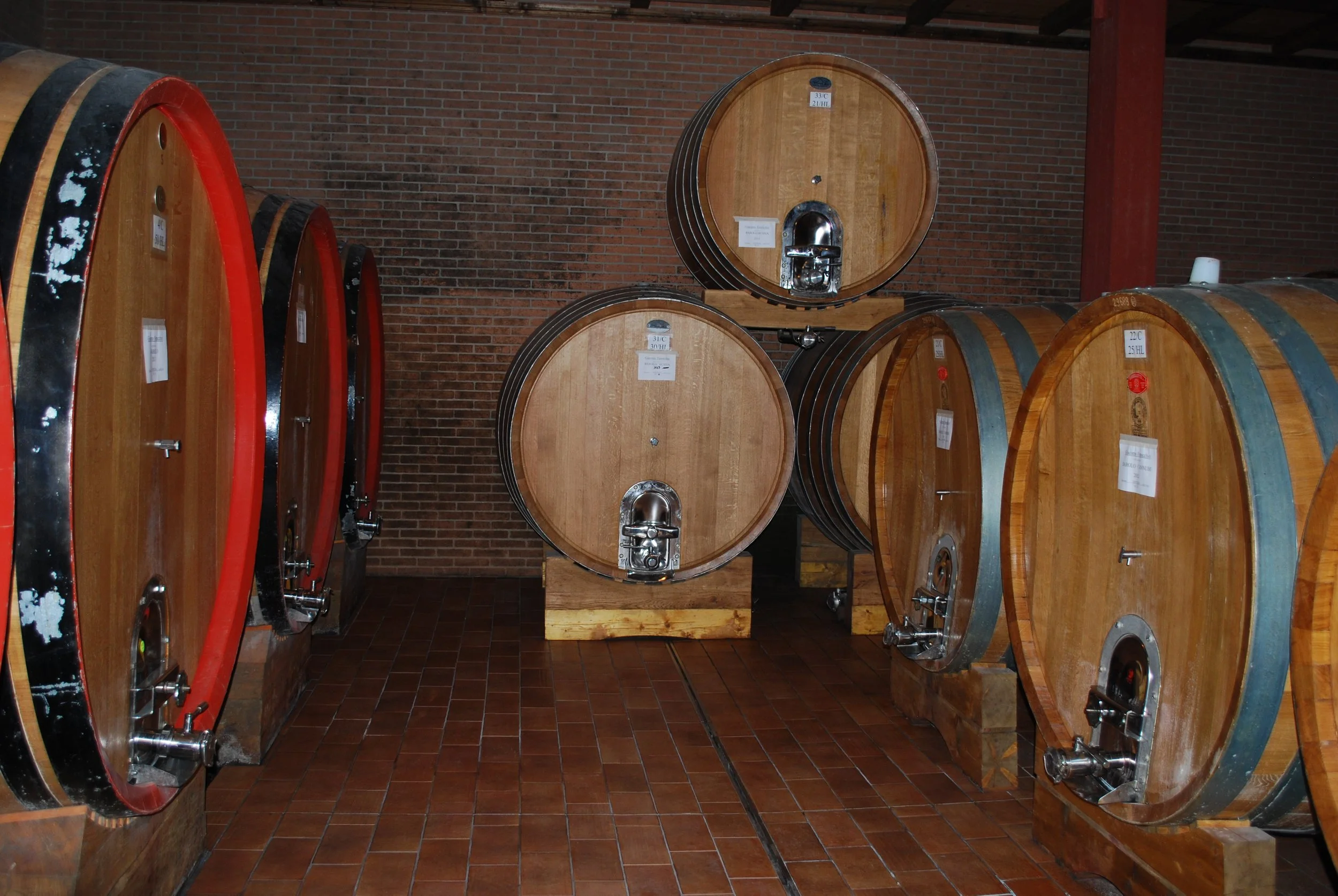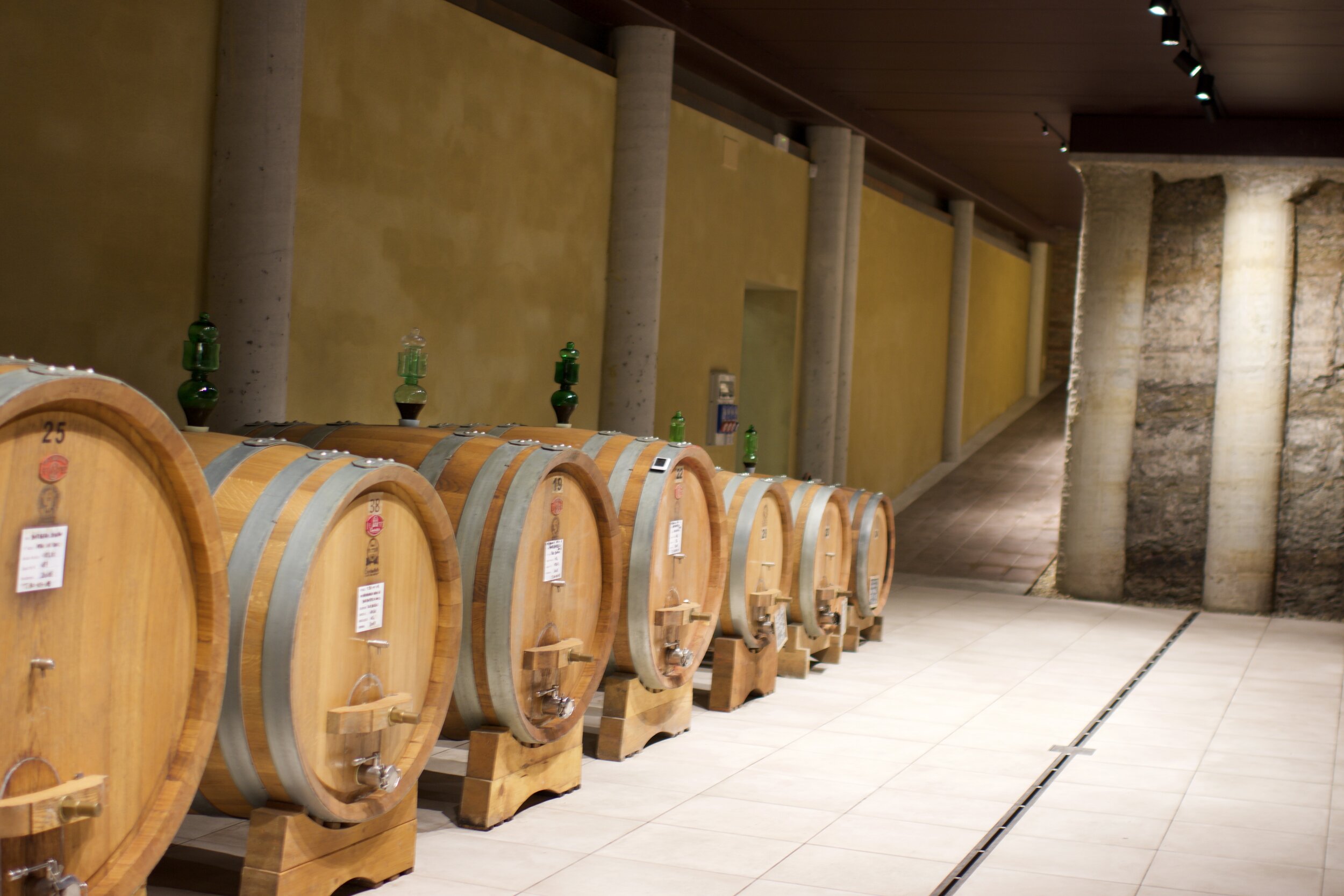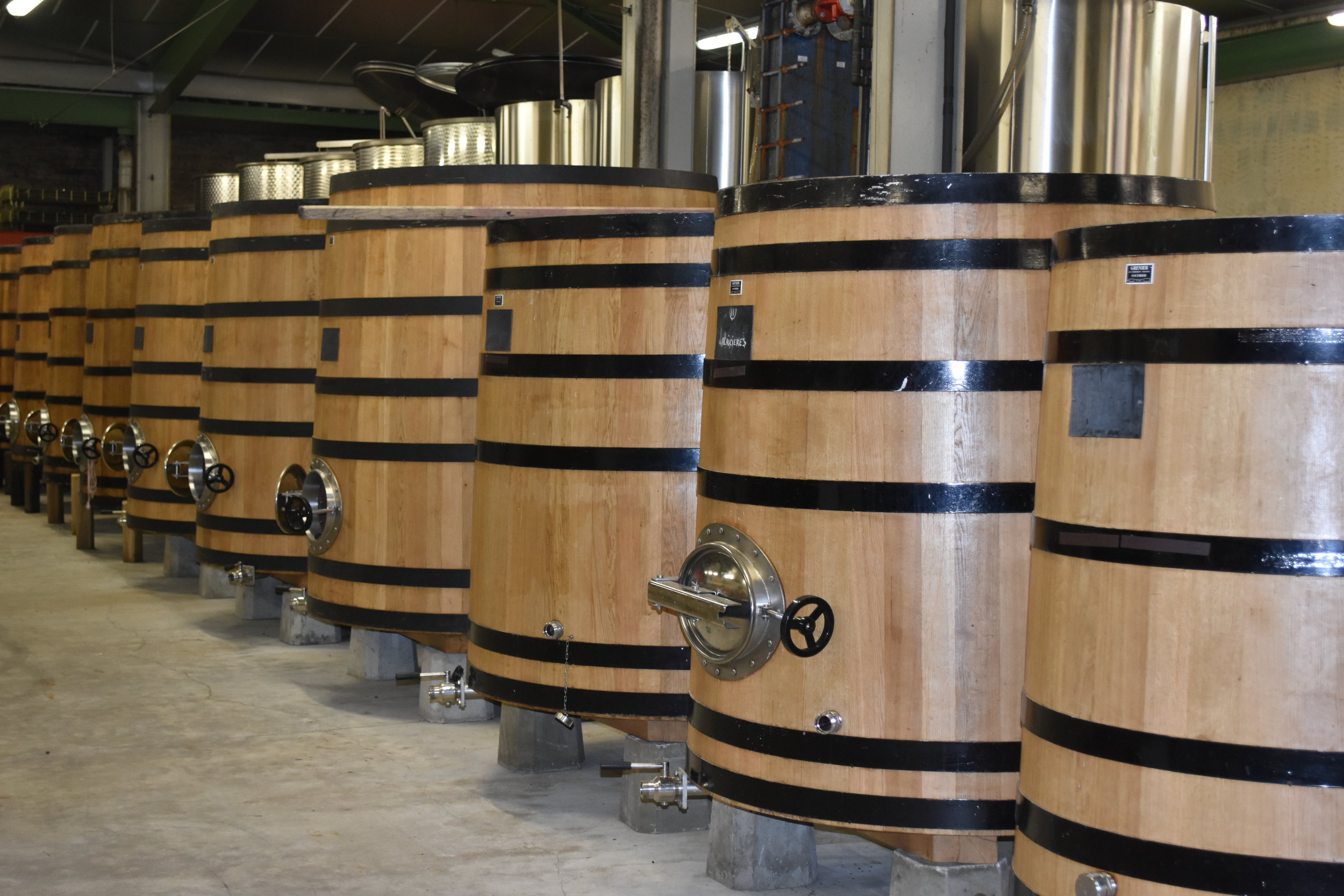The subject of the impact of wood in the wine making process was one of the first topics that really grabbed my attention. The appeal I suppose is that the topic is both technically and chemically complex and also controversial in that people hold strong opinions on the subject. Because it is so nuanced a topic, abbreviations do not always serve well in communicating the precise process adopted with regard to oak by any particular winemaker nor therefore what one might expect in the resulting wine. There are so many subtleties involved in its application that simply knowing a wine was aged in wood tells you almost nothing helpful. And it is controversial because wood - especially of course when ‘new” - normally imparts flavors to a wine that some consumers find detract significantly from the natural flavors of the grape - and thus are unnecessary and indeed undesirable. The new wood serves only as “make-up”. Others find that these flavors do indeed integrate into the wine over time and benefit the wine by contributing to its aromatic complexity down the road. But even in establishing a point of view on its flavor impact, the topic is not straightforward. I, for example, find new oak flavors more “noticeable” and “overwhelming” in a Barolo than in a Burgundy. Why would that be ? This topic deserves some inquiry.
So let us just start with some headline distinctions. Oak can be used during two different phases of a wine’s making.
The first involves actually having the fermentation take place in an oak vessel, as opposed to stainless steel or concrete or some other substance. For whites, the juice flowing from pressing is simply moved (after a number of hours during which it is allowed to settle) to the wooden barrels - often quite small barrique sized - and fermentation allowed to commence. For reds, the fermentation tank will be much larger and may or may not have a lid. Fermentation in both cases takes anywhere from seven to perhaps 21 days and the wine may remain in the vessel another week or two following the end of fermentation if it is felt desirable to maintian skin contact for longer. In practice for reds this fermentation vessel is reused year after year and so the wood is not new. After the red has finished fermenting the juice will be racked off into a different vessel and the remaining pomace may be pressed and the juice from that also included.
The second is the maturation process. The fermented wine remains in a vessel made of some variety of wood for many months - ranging perhaps from 12 to 24. Normally that wood is made of oak but can be sourced from any one of many different forests. That wooden container may be of very different sizes and may not have been used before, or it may have seen wine from several prior vintages. Normally a wine fermented in an oak fermentation tank would subsequently also be matured in oak.
What you give up fermenting in wood is some control. A stainless steel fermentation tank can be vary large and can be temperature controlled. The bigger the wooden fermentation vessel the less easy it is to have a cool cellar do the cooling job. Simplistically, temperature is important for fermentation since color transfer from the grapes skins requires a higher temperature than the creation of desirable volatile aromatics, which are transferred at a lower temperature. So more control affords less risk. Plus stainless steel tanks are easier to clean initially and so there is less risk of bacterial contamination during the fermentation itself.
What proponents believe you gain by fermenting in wood is that oak flavors integrate better during the maturation process - for both reds and whites - if the fermentation itself was done in wood. This is particularly true of whites when fermented in smaller barrels. There are many reactions involved but it appears the yeasts essentially absorb some of the new oak flavors and make them less pronounced, and the yeasts may themselves coat the interior of the barrel, reducing the contact of the wine with the wood itself. The result is the counterintuitive outcome that a white wine fermented in a new oak barrel and subsequently matured in that oak barrel will taste less of new oak than one fermented in steel and then transferred to a new oak barrel. The fermentation process itself mutes the impact of the new oak.
Fermenting reds in a wooden vat without a lid certainly brings a lot of contact with air early on, so the yeasts can multiply more easily and of course any manual punching down of the cap or pump over is easier. Many assert wood has desirable thermal properties relating to maintaining temperature, though others say concrete is better for this purpose. The vat’s conical shape may help with extraction. Some say wood gives more aromatic precision to the wine during fermentation. Often though fermentation in wooden vats is done for reasons of tradition - the vats have always been used in the cellar and since they last a very long time there is no reason to replace them. And they really look better than adjoining square, painted concrete blocks !
The rest of this post will focus only on the second process - maturation of the wine in wood for many months.
The reasons for doing this are several. Maturation in wood stabilizes color of a red wine because of the reaction of the tannins with anthocyanins and the tannins are softened by polymerization. The transfer of oxygen through the wood to the wine also oxydizes the wine just slightly which improves structure.
Before we look more closely at the function of wood and how it influences the wine, a brief digression on types of wood is helpful.
Oak is a genus called Quercus - of where there are several hundred species. In practice we are concerned with only three - one American and two European. American oak is Quercus Alba, which is highly flavored and requires a saw to cut it if the staves to be watertight. Among the European species, of primary importance is Quercus Sessilis, and secondarily Quercus Robor. Both these incidentally must be split along the grain and the staves will only then be watertight. If sawn they are not. So barrels made from European oak are more expensive. Quercus Sessilis has the higher reputation since it has the tightest grain and gives attractive aromatics. It is found in forests in central and eastern France - Troncais (actually a part of Allier), Allier, Nevers and Vogues. The forests Limousin in the south of France are of the species Quercus Robor, which has a looser grain and imparts less flavor. A new 225 liter sized barrel costs about Euro 700 - so adds the considerable sum of about Euro 3 to the cost of each bottle of wine.
Both the degree of flavors imparted (if new) and the degree of oxygenation achieved depend on the size of the barrel. A bigger barrel involves less surface area of wood in contact with wine, which slows down oxygenation. A 225 L barrel might give about 20 to 40 mg/L of dissolved oxygen to the wine over the course of a year. A point that is worth noting is that a bigger barrel is also made of thicker wood - in the case of 20 HL barrels considerably thinker than 225 L barrique - so that further slows down the oxygenation process. Grain size matters. After many vintages the wood itself becomes less porous to oxygen. Though the staves may loosen just a little over time, it is fair to say older barrels transfer oxygen less efficiently.
It is to be noted that one more and more frequently sees larger barrels being used in Burgundy than the conventional 228 L. This is especially so for whites. Many are using 600 L barrels to slow down the oxygenation process. Some are experimenting with Italian style botti - which might be 10 or 20 HL. This is a trend that I expect will continue.
If one is going to use new barrels the choice of cooper is very important. I am no expert but I am told that the understanding one develops with one’s cooper is hard to overestimate. Mistakes can be made, with disastrous outcomes. One cooper’s ‘medium toast” is another cooper’s “high toast”. Nor does ‘high toast” mean you get more of everything - high toast will in fact leech less wood tannin into the wine. Some coopers work with wood only from particular forests. There are more variables in constructing a barrel than you can possibly imagine. It is also commonly understood among locals in Burgundy that certain coopers - particularly the frequently used Francois Freres - have quite a recognizable signature that can be detected in the wine. For this reason many use more than one cooper.
The attentive consumer will be very aware that of late the amount of new oak is being reduced at many Domaines in Burgundy. Some Domaines that historically used 100% new oak are dialing this back just a little. Many that perhaps used 75% new oak on their Premier Crus are now using closer to 60%. A small but noticeable trend. But it is important to remember that many of the absolute top Domaines are still unhesitatingly using 100% new oak - DRC, Domaine Leroy and the followers of Henri Jayer. Dujac also - at least when Jacques made the wine. And although in Barolo there are some celebrated names, having in the past moved towards new wood barrique, that are reverting more towards aging the wine in larger botti, the number of producers overall using barrique still outnumbers those using botti, especially in La Morra. This is fine of course. There is room for all styles of wine. Just don’t ask me to drink them all.
Which brings me to the all important practical questions.
Is it the case that the flavors of new oak truly integrate into the wine over time ? Here I am talking over say a twenty year period. I myself typically age my grander wines quite a while. So whether I pick up excess new oak flavors at year five or even year ten does not really concern me. What matters is how it influences the wine at year twenty.
The proponents of the use of high proportions of new oak principally do this for one of three reasons.
The first is purely practical and has to do with how hard it is properly to clean a used barrel - so one uses old barrels as seldom as is consistent with your view of that cleanliness issue. Certainly I have had wine from what would appear to have been ‘dirty” barrels and it is not pleasant.
The second, as mentioned above, is that new wood has better oxygenating properties than old wood. The transfer of oxygen is somewhat compromised by prior use as tartrates build up over the vintages. The gentle oxygenation gives a roundness to the wine, reduces astringency and stabilizes color. In this there is universal agreement. Older barrels therefore do not perform these functions quite as well and perhaps not well at all after six or seven passages. Some believe the oxygenation properties of new wood are so important that they must prioritize the use of new barrels and simply find ways to mitigate any unintended “new oak” flavors that result as best they can.
The final reason is that to some winemakers new wood impacts desirable flavors and qualities to the wine. And this last is surely where the real controversy lies. It is fair to say no winemaker today making wines of terroir will say he actually wants his wine to taste of toasty new oak. He will speak in terms of the enhanced complexity over time that aging in new oak affords. Henri Jayer spoke of the favorable catalytic action of wood tannin in the staves of a new barrel with the grape tannin and other phenolics in the wine, giving in time more stable and complex flavor molecules. But these desirable benefits do seem to come only with the addition of certain unavoidable flavor overlays that the new wood necessarily imparts - vanilla, coffee and grilled almonds. Does the asserted added complexity justify the presence of those flavors ?
Unhelpfully, my experience is both limited and quite mixed, but if you pressed me I would say that the flavors of new oak to my taste remain present in the wine for very long periods. But it is also surely the case that Grand Crus can “handle” more new oak than Premier Crus. It is evident that the growers believe this since none to my knowledge are putting their Premier Crus into higher proportions of new oak than their Grand Crus (except Rousseau in relation to the Clos St Jacques, which is really a Grand Cru). The sheer depth of fruit of a Grand Cru - and perhaps its higher tannic profile - seems to have enough presence on the palate not to be overwhelmed by all that new oak. Henri Jayer used to say it is about having adequate “concentration” of fruit to support the new oak. Perhaps with the tendency toward lighter extractions, today’s fruit at the Premier Cru and “Village” level is of a nature that it is appropriate to dial back the new oak a bit. And for sure I have no adverse reaction to a Premier Cru Burgundy that has been aged in 50% new oak. And Burgundies aged in 100% new oak work just fine for me also, provided the vineyard has what it takes and the oak has had time to integrate into the wine over 20 years or so. In the context of Barolo, subject to the point below, I can say with more confidence that to my taste a Barolo aged in new barrique never loses that influence in its creation. Curiously, too, I notice the new oak more when drinking the second glass than the first.
Why do I find new oak so much more objectionable with Nebbiolo than I do with Pinot Noir ? Clearly Nebbiolo has plenty of natural tannin in a way that Pinot Noir does not. The grape lacks for nothing in the structure department. So perhaps the role of new oak seems more redundant in the case of nebbiolo ? The difficulty with that argument is that the pinot noirs that seem most able to ‘absorb” new wood are the Grand Crus, which normally have the highest levels of natural tannin. Cabernet Sauvignon, too, with its high level of tannin, in the main seems able to accommodate new oak when done well. So it surely cannot be the presence of tannin alone that drives the disparity of my tolerance.
More likely it is that Nebbiolo’s particular flavors are so distinctive that any overlay of vanilla from new oak is more noticeable and therefore an unwelcome intrusion. Pinots noir’s intrinsic flavors are less insistent, and those flavors seems to “work” and integrate better with any residual flavors present from the wine’s time in new oak. In particular nebbiolo’s more savory flavors in the family of liqorice or tar or balsamic do not marry well with vanilla, which adds an unwelcome sweetness to flavors that are naturally savory. I surely like vanilla sauce with some ice cream flavors but less with others.
Could it just be what one is accustomed to drinking ? It is through drinking “traditional” Barolo made in old botti that I have become more sensitive to oak flavors when they are present in any red wine. Given that old botti - with at least ten times the volume of a standard barrique - impart no flavors of new oak at all, the Barolo I habitually drink is the equivalent of drinking completely unoaked Premier or Grand Cru Burgundy. And if that is all I did (were it even possible), I am sure I would be more sensitive to the one Burgundy that came along that had seen a good amount of new oak and find the resulting flavors an unnecessary overlay. So I experience a sensitivity and response to the presence of oak based on what I am accustomed to drinking - unoaked Barolo but Burgundy with at least some new oak. Start drinking a lot of unoaked wine - even Bordeaux - and then come back to an example aged in new oak, and I expect the oak is pretty evident. And then one is simply left with the question of whether one prefers that new oak presence or not, which is a purely subjective preference.
The caption picture is from the new cellar at the admirable Cascina delle Rose in Barbaresco and was chosen simply to illustrate different barrels sizes.





